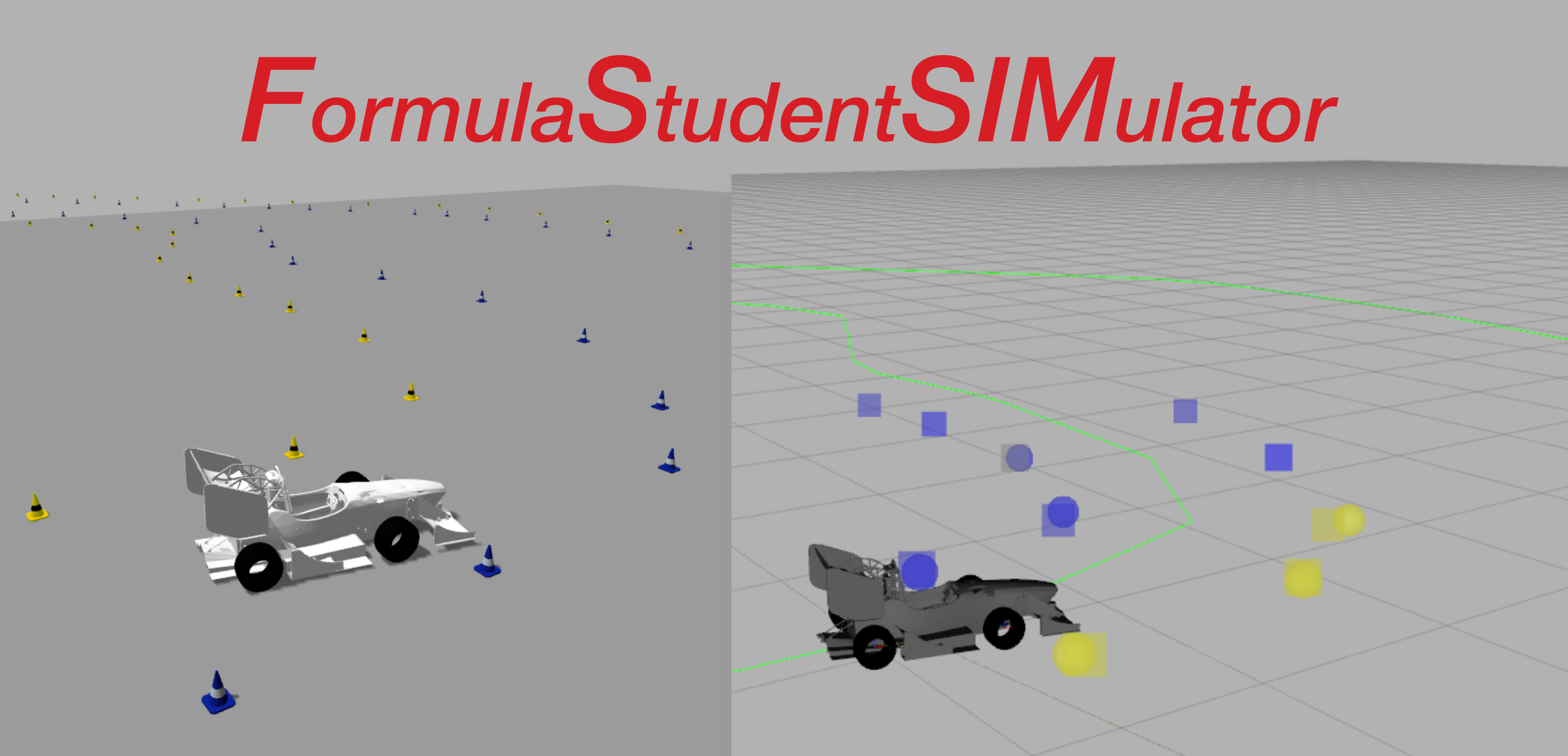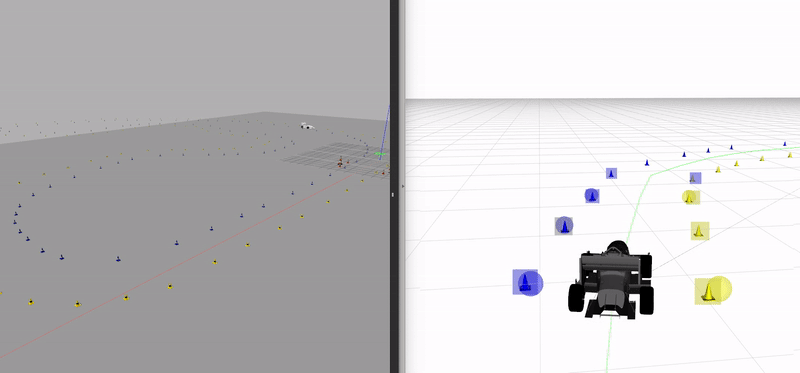FSSIM is a vehicle simulator dedicated for Formula Student Driverless Competition. It was developed for autonomous software testing purposes and not for gaming. A version of this simulator was used to predict lap time of gotthard at FSG 2018 trackdrive with 1% accuracy.
This simulator is developed and tested on Ubuntu 16.04 and ROS Kinetic and both are assumed to be already installed.
The more extensive tutorial can be found under Wiki
FSSIM is developed by Juraj Kabzan as part of our work at AMZ-Driverless.
- Install
sudo apt install ros-kinetic-desktop-fullandsudo apt install python-catkin-tools - Clone this repository to an existing ROS Workspace initialized with
catkin init - Run
cd src/fssimfrom the workspace. - Run
./update_dependencies.sh, you will need to approve multiple packages to be installed - Run
catkin build - Source the workspace
- After successful building, run the simulator with
roslaunch fssim auto_fssim.launch. RVIZ window will start. NOTE: You might need to untick and tickFSSIM TrackandRobotModelin RVIZ in order to load the STL files. NOTE: This[Wrn] [ModelDatabase.cc:339] Getting models from[http://gazebosim.org/models/]. This may take a few seconds.might take up to a minute when starting for the first time. - The terminal will inform you what is happening. The loading time takes around 20 seconds. When
Sending RES GOwill show up in the terminal, you can start controlling the vehicle with/fssim/cmdtopic.
- Install
sudo apt install ros-kinetic-desktop-fullandsudo apt install python-catkin-tools - Clone the AMZ skeleton workspace.
- Run
./update_dependencies.sh -ffromfsd_skeleton, you will need to approve multiple packages to be installed - Compile with
catkin build - Source the workspace
source fsd_environment.sh - Run
roslaunch fssim_interface fssim.launch - Run
roslaunch control_meta trackdrive.launch
or
- Run automated test. Execute
FSD_ATS(this command is loaded when sourcingfsd_environment.sh). If you will want to see the visualization, run RViZ:roslaunch fssim_interface rviz.launch. NOTE: The car will keep driving until the simulation will time-out since no lap counter is implemented.
- This simulator is targeted for FSD competition, thus it contains some of the real-car safety features
- RES (Remote Emergency Stop): The vehicle will not be able to be controlled if a
/fssim/res_state/push_button = trueis not sent. On the other side, if/fssim/res_state/emergency = trueis send, the vehicle will stop immediately. If you start FSSIM withroslaunch fssim auto_fssim.launchor throughfssim_interfacethis is done automatically. - Leaving Track: If the simulation is started with
auto_fssim.launch, an automated RES person is launched. This means, if the vehicle exists the track with all four wheels, RES-emergency will be send and the simulation will exit itself
- RES (Remote Emergency Stop): The vehicle will not be able to be controlled if a
- FSSIM does not simulate the RAW sensors! It uses a cone-sensor-model instead. This means a cone observations around the vehicle are simulated with numerous noise-models. The configuration file for this sensors can be found in fssim/fssim_description/cars/gotthard/config/sensors.yaml. Thanks to this simplification it is real-time capable
- FSSIM does not use GAZEBO Physics Engine to simulate the vehicle. Instead, it uses a basic vehicle model which is discretized with Euler Forward discretization and overwrites the model pose. This feature allows the simulated model to match closely the real world car.
- Automated Run of multiple scenarios with different configurations and save logs as well as report.
- Lap-time counter
- The update rate of TF between wheels and main chassis is too low or too rough. This causes jumps of wheels at higher speeds in RViZ. This influences only the visualization and not the functionality.
A note: this is a public copy of a private version. The public version might have some internal functionality removed. FSSIM was developed by


